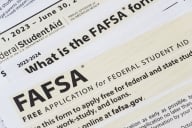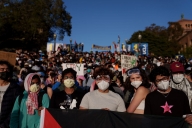You have /5 articles left.
Sign up for a free account or log in.
The percentage of borrowers who default on some form of federal student aid dropped slightly, according to figures released by the Education Department Wednesday, marking the lowest default rate in a decade.
According to data released Wednesday, 9.7 percent of those who entered repayment plans on certain Federal Family Education or William D. Ford Federal Direct loans in the three years ending in fiscal year 2017 defaulted. That’s down slightly from the three-year 10.1 percent rate ending in fiscal year 2016 and three-year 10.8 percent rate ending in fiscal year 2015. In comparison, the rate was 13.4 percent in the three years ending in fiscal year 2010, the first period tracked by the department.
The rate also declined at proprietary institutions from the last three-year period, from 15.2 percent to 14.7 percent. That’s believed to be an all-time low for for-profit institutions, Jeff Silber, an analyst at BMO Capital Markets Research, wrote in an analysis.
The three-year cohort default rate also dipped slightly for borrowers at public institutions, to 9.3 percent from 9.6 percent in the previous three-year period. But among borrowers at those institutions, the default rate went up from 12.7 percent to 13.1 percent among those at less than two-year institutions, and from 6.8 percent to 7.1 percent at public four-year colleges during the same time frame.
The rate remained largely the same at private institutions, ticking up from 6.6 percent to 6.7 percent.
The drop isn’t surprising given the strong economy in the latest three-year period measured, said Dan Madzelan, the American Council on Education’s assistant vice president for government relations.
Debbie Cochrane, vice president of the Institute for College Access & Success, said the decline could be a sign of steps institutions, including community colleges, are taking to help students do better in school and not default on their loans. But she and Michael Itzkowitz, senior fellow at the centrist think tank Third Way, also said the decline could be a sign of colleges avoiding having their default rates drop by pushing borrowers to enter forbearance, which increases their costs in the long term.
The numbers show the inadequacy in using the default rate as an accountability measure, Itzkowitz said, noting that only 12 institutions have default rates so high they could face the possible loss of federal student aid funds.








